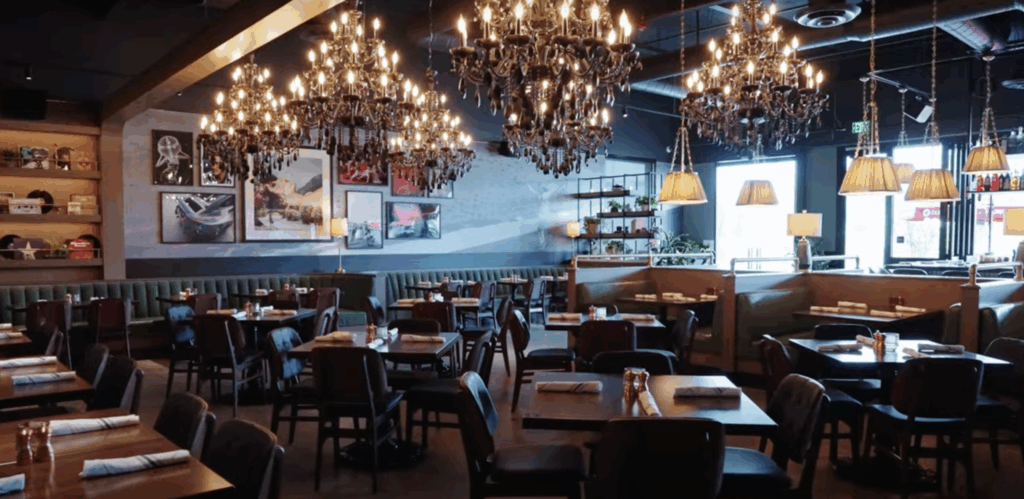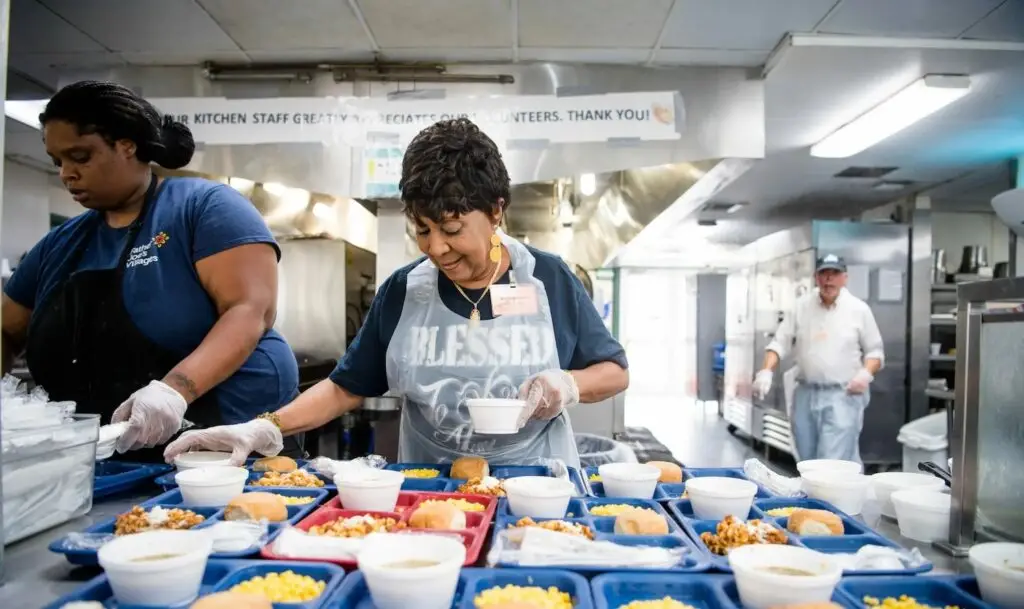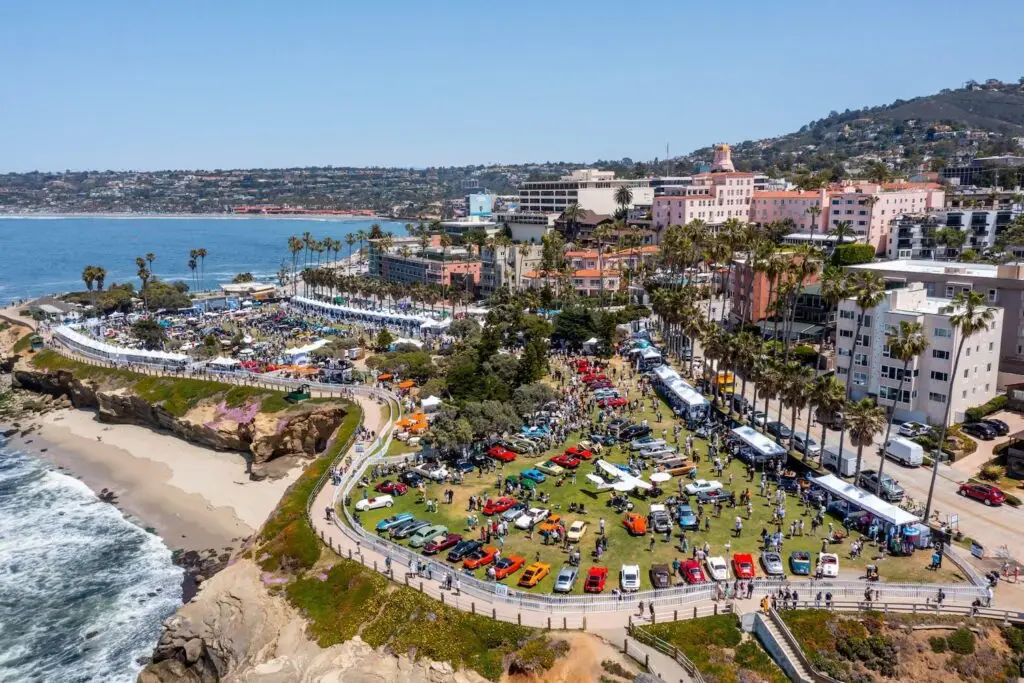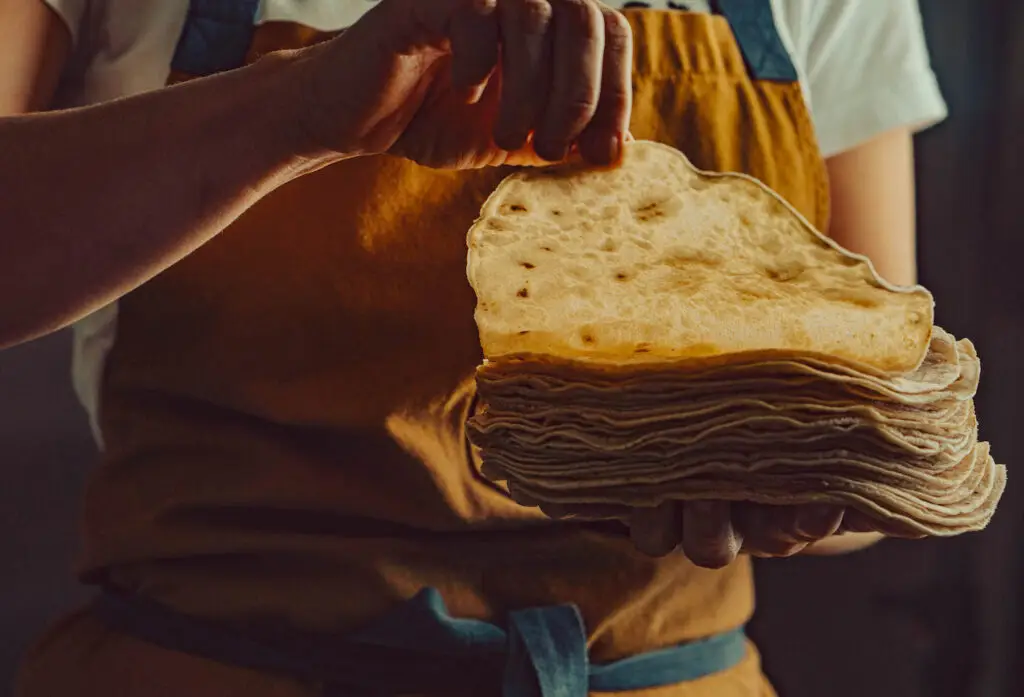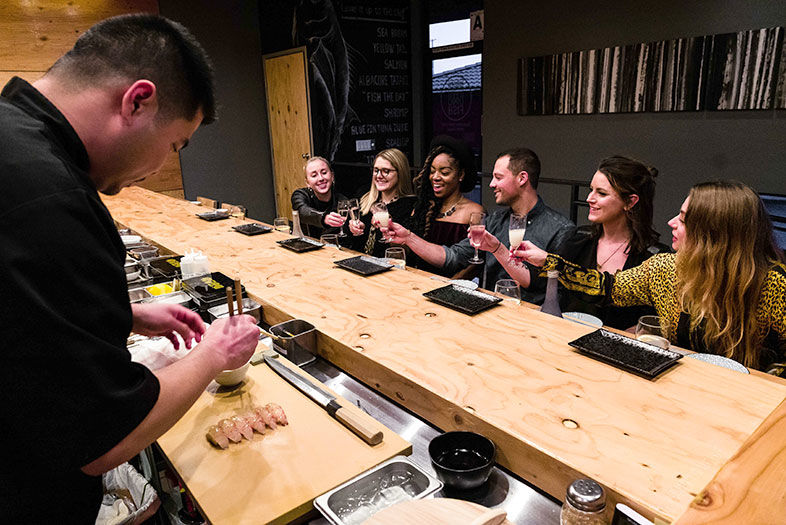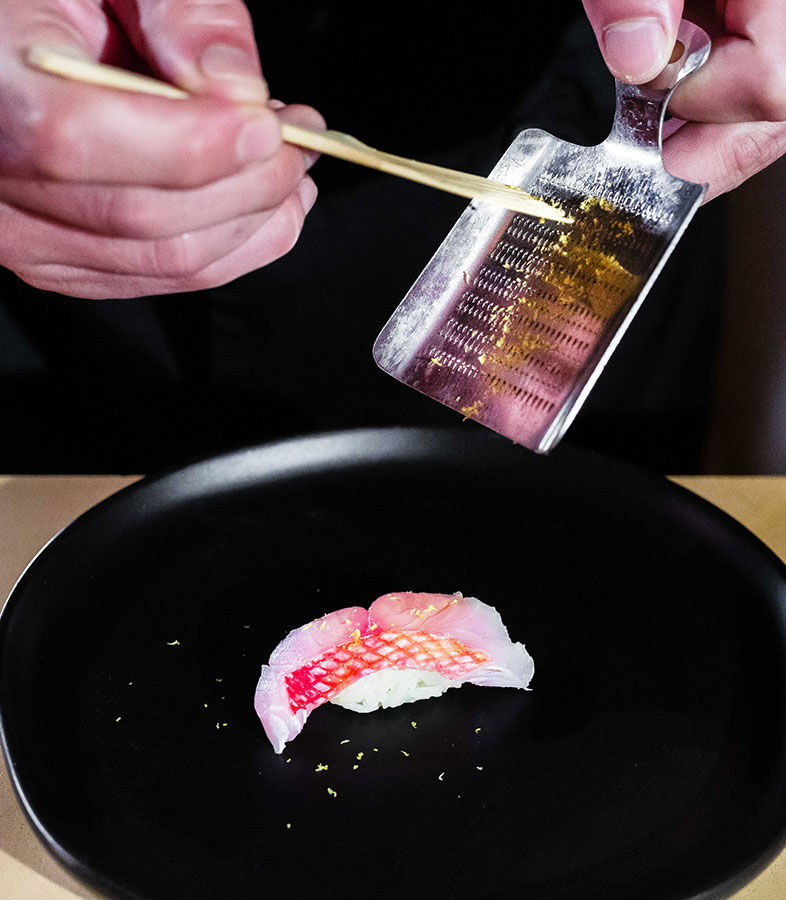
Hidden Fish Marks the Arrival of Design in Convoy
Sea bream with lemon zest
Hidden Fish
4764 Convoy Street, Kearny Mesa hiddenfishsushi
BEST DISHES
Sea Bream
Albacore Tataki
Cured Black Cod
It’s a glow box in the darkness. Hui An Garden restaurant used to light this corner of Convoy Street at night, but its run has ended. There’s a Wendy’s nearby, but that’s another kind of darkness. Because the surroundings are so gothically dead, the warm amber light of Hidden Fish beams like a portal of hope, the Japanese version of Edward Hopper’s famous painting Nighthawks.
Hidden Fish is the first sushi restaurant of its kind in San Diego. There are no rolls. No edamame. No miso soup. No soy sauce on the table. No fake wasabi (Americans love our green-colored horseradish). No desserts. There is only omakase, or chef’s choice. And, of course, sake, beer, and nonalcoholic beverages. Because if you can’t sell beverages at your restaurant, you’ll probably end up selling your restaurant.
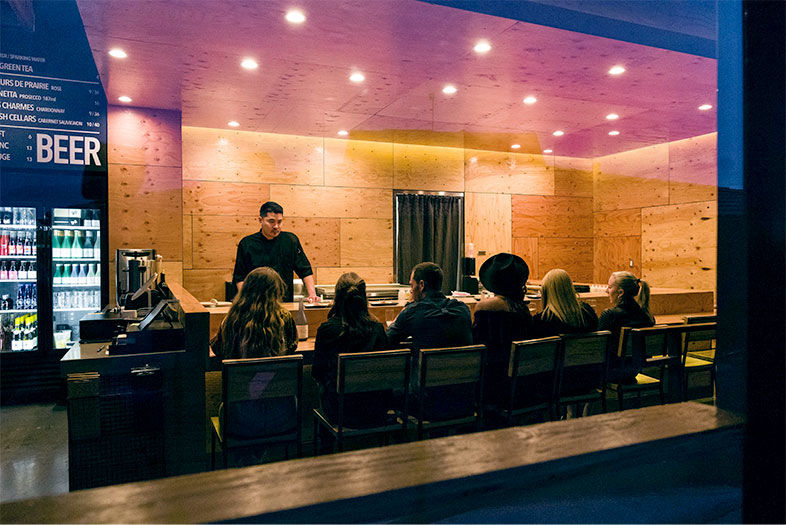
Hidden Fish Marks the Arrival of Design in Convoy
Inside Hidden Fish
“We don’t have a kitchen,” one of the chefs tells us.
Here’s how Hidden Fish works. You make a reservation, which they only offer each hour, on the hour. You arrive a few minutes before your appointed time. A late arrival throws a wrench and a crowbar and a live grenade into the spokes of the Hidden Fish business plan. With only 14 seats and two available experiences—a 50-minute omakase (12 pieces, $50) or a 90-minute one (18 pieces, $90)—micromanaging minutes is essential. As such, a visit here isn’t a dinner reservation in the traditional sense; it is an appointment, like for the doctor or tickets to a movie. The show will start with or without you. It has to, in order to prevent riots from other customers or a brutal Yelping.
That’s why they require a credit card for each reservation. If you cancel within 24 hours of your reservation, you’re charged $25. A manager at the restaurant calls twice to confirm we will be there, and on time.
You arrive and are seated in the “lounge” area (tall seats against the window, less a lounge than a holding area). A “30 Minute Omakase Zone” is painted in large black letters on the concrete floor. Apparently, they started with a 30-minute omakase, but found the time frame too short for a good experience (and now need to repaint their floors).
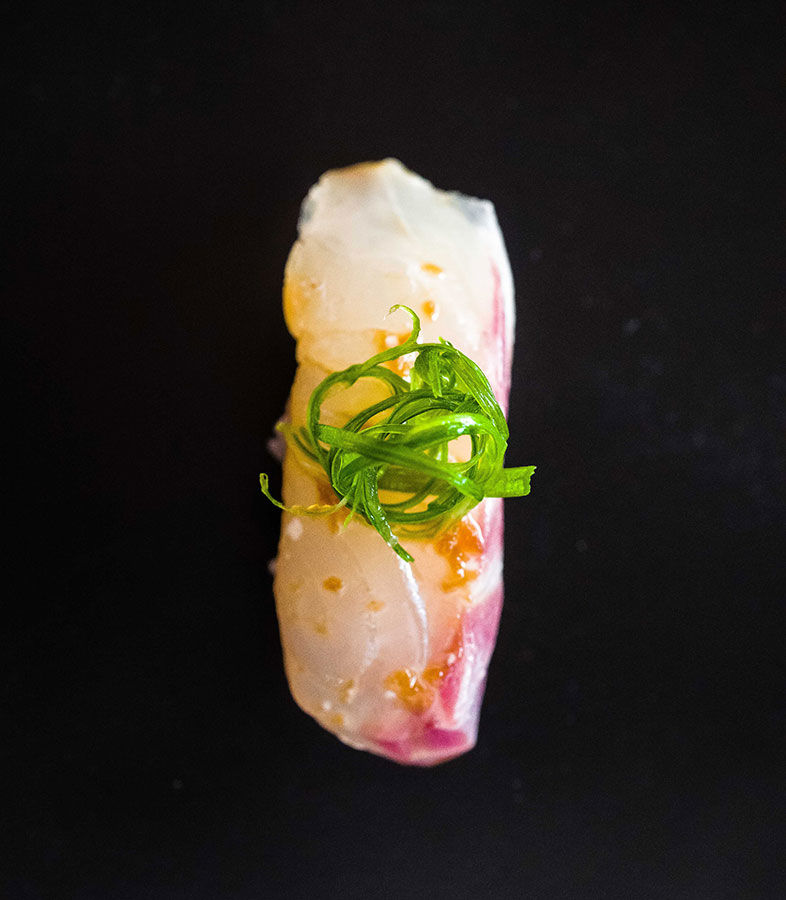
Hidden Fish Marks the Arrival of Design in Convoy
Albacore tataki
In 99 percent of sushi restaurants, omakase is merely one of many options. Hell, most sushi restaurants even serve chicken teriyaki just in case you bring the one remaining American who thinks raw fish is weird. How you enjoy a sushi restaurant best depends on what you enjoy, but many regard omakase as the ultimate experience. It’s reserved for the true sushi aficionados, the adventurous, and the expense-accounted. The word translates to “I’ll leave it to you,” and it means just that. Chefs take a look at their stock of seafood and decide what’s freshest and apex-ish. (Any sushi chef will admit not everything in their refrigerated case is the best that fish can be—the sea is a wild, unpredictable habitat that raises children of varying levels of health and attractiveness.) They serve piece after piece, herbed and sauced to their whim.
Hopefully that whim is an expert one, since you’re not getting out of Hidden Fish for less than $53.63 per person (not counting alcohol). Chef-owner John Hong (aka Chef Kappa) has a solid résumé—he was opening chef at downtown’s sushi club, Bang Bang, and spent nearly two years working under highly revered itamae Yukito Ota of Sushi Ota. Still, training under Ota does not make your name Ota, or Nobu, or Jiro.
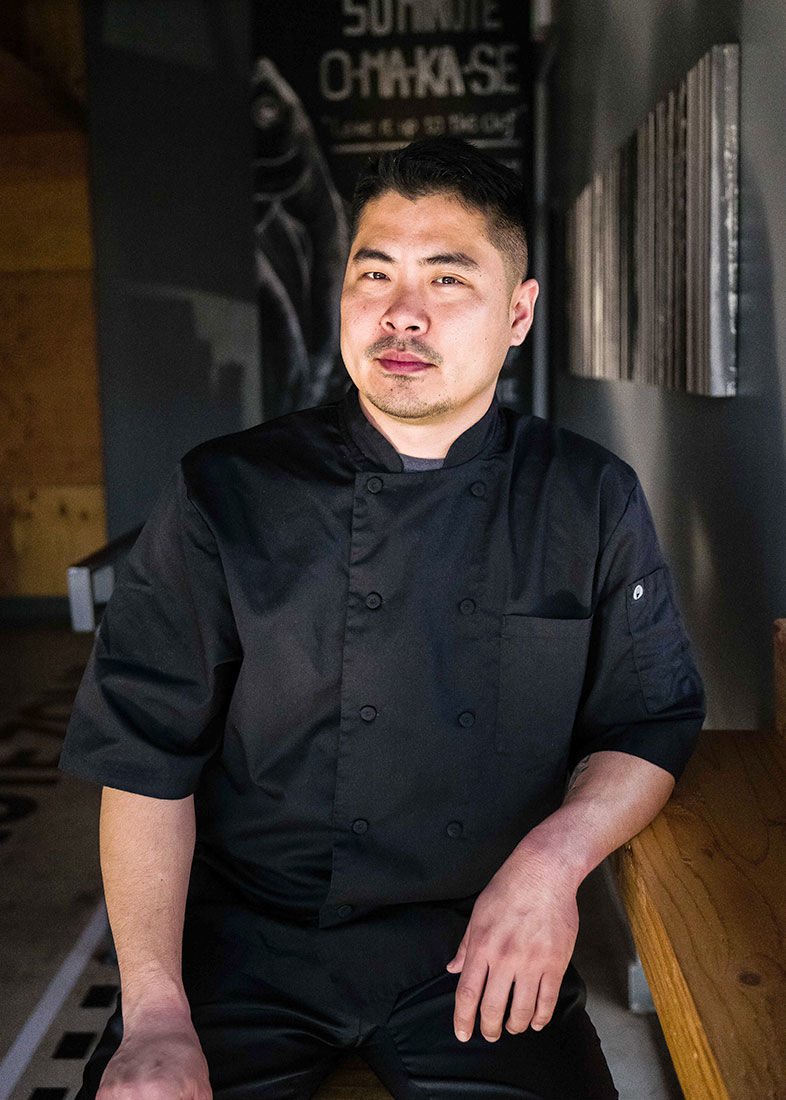
Hidden Fish Marks the Arrival of Design in Convoy
Chef-owner John Hong
That means Chef Kappa’s still got some proving to do—especially since he’s lopped off the sushi training wheels (rolls, edamame, miso soup, fried foods, etc.). He’s attempting to attract a clientele with higher sushi acumen, and seems to have succeeded. An investment banker from Colorado explains that he chases sushi during his constant traveling, and he’s smitten with Hidden Fish. “There will be a line out the door next month,” he predicts. Another man sits alone for a 50-minute omakase, peppering questions at his chef (there are three chefs in the L-shaped omakase bar).
The omakase at Hidden Fish consists exclusively of piece after piece of nigiri (rice, wasabi, fish, garnish, and sauce). The quality of nigiri comes down to three things: the seasoning and doneness of the rice, the quality of the fish, and the flavor of the sauces (many sub-skills matter, such as storage, butchering, knife skills, a spiritual relationship with fish, etc., but we’ll leave that depth to Jiro for now). Hidden Fish has top-quality fish sourced from all over the world, including San Diego and Tokyo’s famous Tsukiji fish market. They use real wasabi, sweeter and less painful than standard “wasabi” most restaurants serve, which is not wasabi at all.
Where Hidden Fish stands out pretty spectacularly is their seasoned sushi rice and their soy sauce. Instead of the usual mirin (Japanese rice vinegar), a chef explains that they use red wine vinegar. It turns the rice vaguely tan, and the flavor is closer to a nicely reduced broth that’s infused into each fluffy kernel. Chefs should steal this idea. They also ferment their soy sauce from scratch, and the difference is stark. Comparing it to bottled commercial soy sauce is like comparing an aged Japanese whiskey (a Suntory, say) to Canadian Mist, or a Sprite. It’s worlds more delicious, deeply complex instead of merely salty.
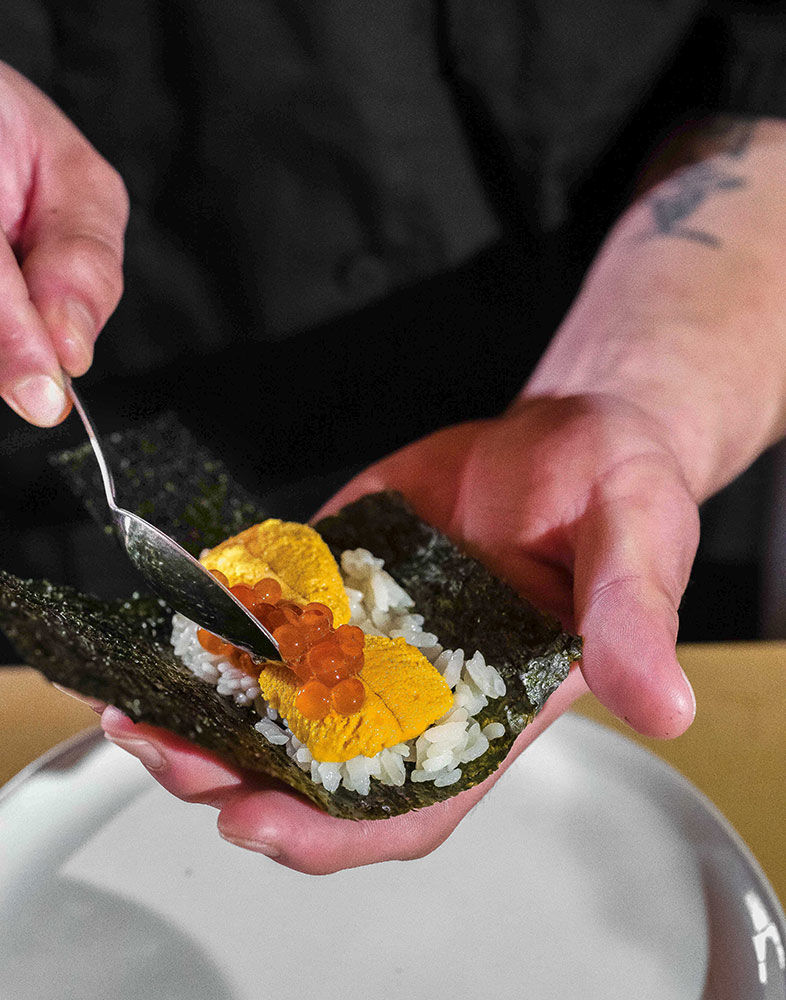
Hidden Fish Marks the Arrival of Design in Convoy
Preparing the uni and ikura roll
The nigiri comes out to everyone at the same time, every four minutes, almost on the dot. There is a white sea bream with white bean soy sauce and green onions, yellowtail with chimichurri, albacore with radish ponzu, amberjack slathered with truffle oil, cured black cod with sea salt, seared scallop with lemon zest and sea salt, and toro tartare (fatty tuna belly ground in the form of spicy tuna) with that housemade soy, wrapped in nori. There is uni. All of the sauces are delicious, deep with flavor, applied with just the right restrained touch so that they don’t overwhelm the fish. That radish ponzu is particularly special, a sharpness cutting through the fermented umami of the traditional sauce. You can make minor adjustments. If you don’t enjoy uni, the chef will replace your uni course with a different nigiri. If cilantro tastes like soap because of your genetics, you can ask to leave it off.
Service here is very attentive, almost stalkerish. Managers stand behind you as you eat, tending to your every need (really, all you could need is a new napkin or a drink, since that’s all they serve). It’s a small place, so you get the feeling of being voyeured—albeit by very nice and hospitable people.
Compared to the elaborate fantasylands of restaurants in Little Italy or North Park, the Hidden Fish decor doesn’t seem like much. But here in Convoy, it’s like a birth announcement for design. The floor-to-ceiling glass of the facade creates a human terrarium, projecting the restaurant far beyond its small footprint into the streets. The lacquered plywood walls, striking in their unadorned abundance, cast the room in an extreme tan. (I’d previously thought tan incapable of extremeness.) It’s both assaultive and comforting. It’s Home Depot minimalism.

Hidden Fish Marks the Arrival of Design in Convoy
A menu for the 50-minute omakase
For years, the moms and pops around here offered authentic Asian food, often cooked by people who’d spent their formative decades in Vietnam, in Thailand, in Korea. But the design of their restaurants was largely an afterthought, or not a thought at all. They’d spent their life savings on the lease, kitchen equipment, licensing, paperwork, and food. To hire a designer or spend money on fancy walls and chairs must’ve seemed financially irresponsible, if not nuts.
Maybe it is nuts. I know one restaurateur who thinks design has gone too far in San Diego restaurants. We’re valuing things, not food. Owners are spending too much time scrolling eBay, not enough reading Cook’s Illustrated. The result, says this man, is art houses whose underqualified kitchens are serving hot shrugs.
But like it or not, we’re in an art-restaurant moment. And Convoy needed good design—especially since Asian food is everywhere now. This area used to be one of the only places in the city you could find ramen, pho, curries, and azuki bean desserts. Now you can find designer ramen in every neighborhood. A restaurant at the mall serves xiao long bao.
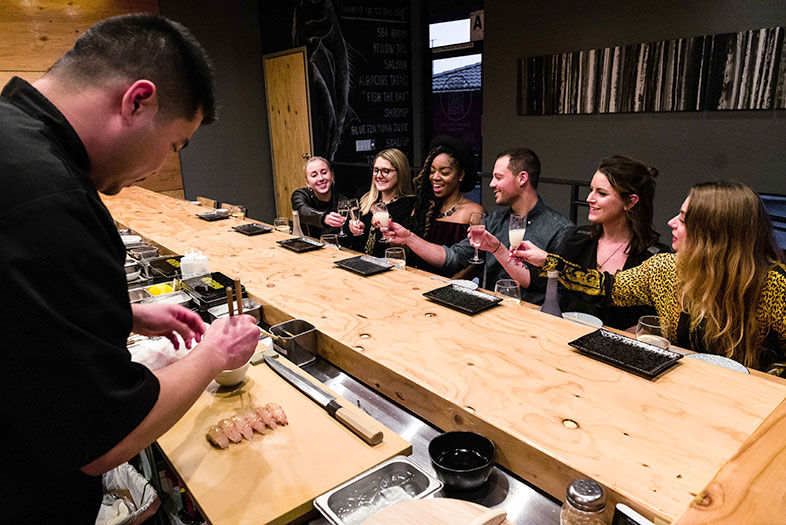
Hidden Fish Marks the Arrival of Design in Convoy
Chef Hong serving at the omakase bar
One thing that concerns me is that, over two visits, we don’t see the sushi chefs clean their knives. We watch one 50-minute omakase before us finish up, and the chefs don’t clean their knives before starting our omakase (another 50 minutes). They’d do well to change this immediately. I’m sure they wash, religiously. Cleanliness is paramount in sushi culture, and in all other aspects Hidden Fish seems extremely dedicated to executing the art correctly. But we simply don’t see it. This should be a very demonstrative ritual at the beginning of each omakase. “Welcome. Let me clean my knives and your omakase will begin.”
When you’re finished with your omakase, you’re not rushed off. As servers explain at the beginning of your meal, you have a few bonus minutes (usually 10 or so) to order more nigiri à la carte. After that, your time is up. You may not linger. The next round of omakasers has arrived. No one seems to grouse about this. They see the next wave of customers gathering, pay up, and leave.
In fact, we find the lack of control relaxing. So a thank-you of sorts is in order to Hidden Fish for that, too. I make enough choices already. I’m making a choice to end this review right here.
